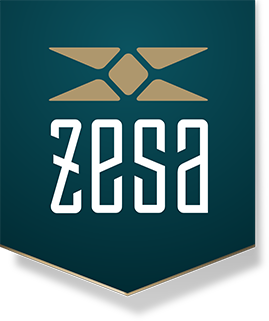CAUTION: ZESA® RECOMMENDS INDIVIDUALS UNDER THE AGE OF 15 YEARS ONLY USE ITS PRODUCTS WHEN UNDER THE DIRECT SUPERVISION OF A PROFESSIONAL ATHLETIC TRAINER.
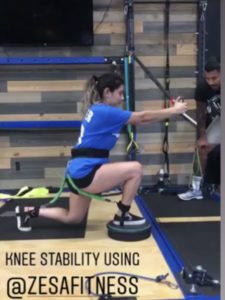 Youth Balance-Strength™ Problems:
Youth Balance-Strength™ Problems:
-
Joint instability injuries in youth athletes can be particularly concerning because their bodies are still growing and developing. These injuries often occur due to their musculoskeletal systems not being fully matured. Growth spurts experienced by youth can also cause imbalances in strength, coordination, and joint stability, making youth athletes more susceptible to injuries.[i]
-
Without specialized training tailored to their developmental stage, youth athletes may not develop proper skills and physical attributes for balance and joint stability, leading to frustration or injury.[ii]
-
Early specialization in one sport without variety in training can lead to burnout or overuse injuries, for example, only doing ice time for hockey with no dryland training for variety and cross training.[iii] [iv]
The Balance-Strength™ Solution: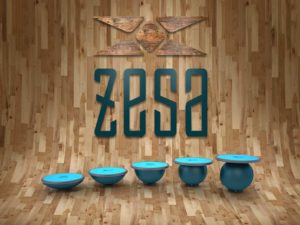
-
The ZeSa® Dynamic Balance-Strength Training System™ advances fitness for youth by engaging them in a variety of dynamic balance challenge exercises with progressive increasing difficulty. As they grow and develop, youth endure constant cumulative changes to neuromuscular and cognitive functions, and numerous studies have shown that dynamic balance training is effective for postural and neuromuscular control improvements which correlate to performance improvements and injury prevention.[v] [vi]
-
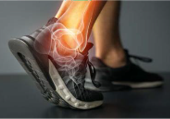 ZeSa’s system provides dynamic balance training which can strengthen all muscle layers surrounding joints in youth that are most prone to injuries (ankles, knees, hips, and shoulders), especially for youth athletes who are involved in sports that require rapid changes in direction or jumping. Training with ZeSa’s system also mimics real world scenarios that young athletes encounter (running, rough terrain, uneven surfaces, slippery ice, contact sports) all in a safe and controlled environment.[vii] [viii]
ZeSa’s system provides dynamic balance training which can strengthen all muscle layers surrounding joints in youth that are most prone to injuries (ankles, knees, hips, and shoulders), especially for youth athletes who are involved in sports that require rapid changes in direction or jumping. Training with ZeSa’s system also mimics real world scenarios that young athletes encounter (running, rough terrain, uneven surfaces, slippery ice, contact sports) all in a safe and controlled environment.[vii] [viii] -
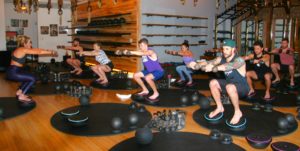 ZeSa also trains “Reactive Balance” when balance is challenged. This requires mental focus that strengthens brain neural pathways & stabilizing muscles (groups of muscles that maintain proper posture and joint alignment during movement) which aid Balance-Strength™ and injury prevention.[ix]
ZeSa also trains “Reactive Balance” when balance is challenged. This requires mental focus that strengthens brain neural pathways & stabilizing muscles (groups of muscles that maintain proper posture and joint alignment during movement) which aid Balance-Strength™ and injury prevention.[ix] -
By placing the body in a multisensory environment (unstable yet controlled) the brain learns
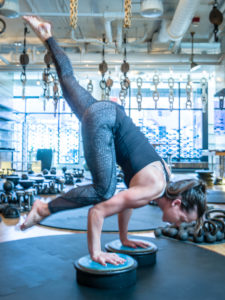 how to manipulate the musculoskeletal system (the body’s framework) to produce movement with the right amount of force at the right time.[x]
how to manipulate the musculoskeletal system (the body’s framework) to produce movement with the right amount of force at the right time.[x] -
Training with ZeSa’s System adds to and increases the benefits of functional training while simultaneously creating a true mind/body connection by forcing the body to engage and activate both the brain and all layers of muscles, and studies show this type of training can increase muscle activation by up to 47%.[xi] [xii] Functional Balance-Strength™ training is important for youth to provide variety in training from the repetitive moves done during sports to reduce the risk of muscle imbalances which can lead to injuries.[xiii]
-
Studies show performing exercises unstable can increase core strength by 24% over traditional training.[xiv] The core muscles (abs, obliques, lower back) are the center foundation of the body, stabilize the spine and pelvis, and allow for efficient
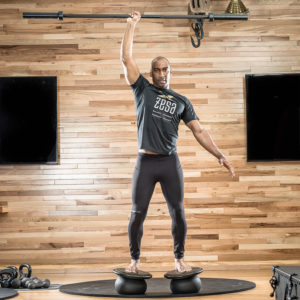 transfer of force and energy during movements.[xv] A weak core can lead to improper movement patterns, which can cause overuse injuries in other parts of the body, such as the knees or ankles and a strong core supports proper posture, which can prevent injuries and reduce strain on the spine, especially as youth grow.[xvi]
transfer of force and energy during movements.[xv] A weak core can lead to improper movement patterns, which can cause overuse injuries in other parts of the body, such as the knees or ankles and a strong core supports proper posture, which can prevent injuries and reduce strain on the spine, especially as youth grow.[xvi] -
As youth go through growth spurts, their bodies can become uncoordinated due to development changes in bones, nerves and muscles. The spine is particularly vulnerable to misalignment and injury. A strong core training program as can be implemented with ZeSa’s Dynamic Balance-Strength Training System™ can aid in adaptation to these changes, helping youth maintain better control over their bodies.[xvii]
-
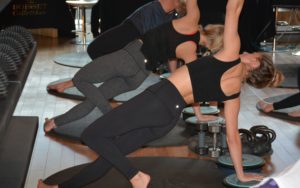 As youth develop core strength, joint stability, and balance improvements, their physical abilities can improve confidence and self-esteem.[xviii]
As youth develop core strength, joint stability, and balance improvements, their physical abilities can improve confidence and self-esteem.[xviii] -
Balance-Strength Training enhances proprioception, or body awareness, which is also important for youth athletic performance and general coordination.[xix]
YOUTH TRAINING VIDEOS
PISTOL SQUATS
WEIGHTED ONE LEG SQUATS FOR BASKETBALL
BASEBALL BAT SWING
BASKETBALL REACTIVE TRAINING
BASKETBALL DRIBBLING
KNEE STABILIZATION
BASEBALL CATCHER WORKOUT
YOUTH BALLET DANCER
YOUTH GYMNAST
[i] Al-Qahtani MA, Allajhar MA, Alzahrani AA, Asiri MA, Alsalem AF, Alshahrani SA, Alqahtani NM. Sports-Related Injuries in Adolescent Athletes: A Systematic Review. Cureus. 2023 Nov 25;15(11):e49392. doi: 10.7759/cureus.49392. PMID: 38146581; PMCID: PMC10749669.
[ii] Jayanthi N, Schley S, Cumming SP, Myer GD, Saffel H, Hartwig T, Gabbett TJ. Developmental Training Model for the Sport Specialized Youth Athlete: A Dynamic Strategy for Individualizing Load-Response During Maturation. Sports Health. 2022 Jan-Feb;14(1):142-153. doi: 10.1177/19417381211056088. Epub 2021 Nov 11. PMID: 34763556; PMCID: PMC8669935.
[iii] Pasulka J, Jayanthi N, McCann A, Dugas LR, LaBella C. Specialization patterns across various youth sports and relationship to injury risk. Phys Sportsmed. 2017 Sep;45(3):344-352. doi: 10.1080/00913847.2017.1313077. Epub 2017 Apr 10. PMID: 28351225.
[iv] Post EG, Trigsted SM, Riekena JW, Hetzel S, McGuine TA, Brooks MA, Bell DR. The Association of Sport Specialization and Training Volume With Injury History in Youth Athletes. Am J Sports Med. 2017 May;45(6):1405-1412. doi: 10.1177/0363546517690848. Epub 2017 Mar 13. PMID: 28288281.
[v] Zech A, Hübscher M, Vogt L, Banzer W, Hänsel F, Pfeifer K. Balance training for neuromuscular control and performance enhancement: a systematic review. J Athl Train. 2010 Jul-Aug;45(4):392-403. doi: 10.4085/1062-6050-45.4.392. PMID: 20617915; PMCID: PMC2902034.
[vi] Gebel A, Lesinski M, Behm DG, Granacher U. Effects and Dose-Response Relationship of Balance Training on Balance Performance in Youth: A Systematic Review and Meta-Analysis. Sports Med. 2018 Sep;48(9):2067-2089. doi: 10.1007/s40279-018-0926-0. PMID: 29736728.
[vii] Belamjahad, A., Tourny, C., Jebabli, N. et al. Effects of a Preseason Neuromuscular Training Program vs. an Endurance-Dominated Program on Physical Fitness and Injury Prevention in Female Soccer Players. Sports Med – Open 10, 76 (2024). https://doi.org/10.1186/s40798-024-00731-7
[viii] Schedler S, Tenelsen F, Wich L, Muehlbauer T. Effects of balance training on balance performance in youth: role of training difficulty. BMC Sports Sci Med Rehabil. 2020 Nov 23;12(1):71. doi: 10.1186/s13102-020-00218-4. PMID: 33292455; PMCID: PMC7684745.
[ix] Gebel A, Lesinski M, Behm DG, Granacher U. Effects and Dose-Response Relationship of Balance Training on Balance Performance in Youth: A Systematic Review and Meta-Analysis. Sports Med. 2018 Sep;48(9):2067-2089. doi: 10.1007/s40279-018-0926-0. PMID: 29736728.
[x] NASM Essentials of Personal Fitness Training, 7th Edition, Chapter 7: Intro to Human Movement Science.
[xi] Behm DG, Leonard AM, Young WB, Bonsey WA, MacKinnon SN. Trunk muscle electromyographic activity with unstable and unilateral exercises. J Strength Cond Res. 2005 Feb;19(1):193-201. doi: 10.1519/1533-4287(2005)19<193:TMEAWU>2.0.CO;2. PMID: 15705034.
[xii] Batista GA, Beltrán SP, Passos MHPD, Calixtre LB, Santos LRH, de Araújo RC. Comparison of the Electromyography Activity during Exercises with Stable and Unstable Surfaces: A Systematic Review and Meta-Analysis. Sports (Basel). 2024 Apr 18;12(4):111. doi: 10.3390/sports12040111. PMID: 38668579; PMCID: PMC11055131.
[xiii] Belamjahad, A., Tourny, C., Jebabli, N. et al. Effects of a Preseason Neuromuscular Training Program vs. an Endurance-Dominated Program on Physical Fitness and Injury Prevention in Female Soccer Players. Sports Med – Open 10, 76 (2024). https://doi.org/10.1186/s40798-024-00731-7.
[xiv] Snarr RL, Hallmark AV, Nickerson BS, Esco MR. Electromyographical Comparison of Pike Variations Performed With and Without Instability Devices. J Strength Cond Res. 2016 Dec;30(12):3436-3442. doi: 10.1519/JSC.0000000000001436. PMID: 27191692.
[xv] Huxel Bliven KC, Anderson BE. Core stability training for injury prevention. Sports Health. 2013 Nov;5(6):514-22. doi: 10.1177/1941738113481200. PMID: 24427426; PMCID: PMC3806175.
[xvi] HuxelBlivenKC, Anderson BE. Core stability training for injury prevention. Sports Health. 2013 Nov;5(6):514-22. doi: 10.1177/1941738113481200. PMID: 24427426; PMCID: PMC3806175.
[xvii] Behm DG, Drinkwater EJ, Willardson JM, Cowley PM. The use of instability to train the core musculature. Appl Physiol Nutr Metab. 2010 Feb;35(1):91-108. doi: 10.1139/H09-127. PMID: 20130672.
[xviii] Pazzaglia F, Moè A, Cipolletta S, Chia M, Galozzi P, Masiero S, Punzi L. Multiple Dimensions of Self-Esteem and Their Relationship with Health in Adolescence. Int J Environ Res Public Health. 2020 Apr 11;17(8):2616. doi: 10.3390/ijerph17082616. PMID: 32290357; PMCID: PMC7215662.
[xix] https://doi.org/10.1016/j.heliyon.2024.e27544
